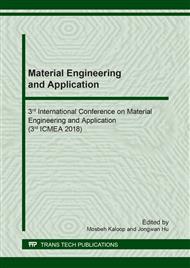p.98
p.104
p.110
p.115
p.120
p.126
p.131
p.137
p.144
The Development of Accelerated Life Test Method of Multi-Layer Nano Thin Film Glass for Electric Automobiles
Abstract:
According to expansion of electric automobiles, the multi-layer nano thin film glass withheating source is researched to retain safety driving for winter. Generally, the tungsten wire is usedas a heating source of electric automobile glass. Due to its low visibility, silver (Ag) particles areresearched for years. Ag is widely used as a material of heater in the automobile industry since ithas relatively high heat and electrical conductivities. However, the multi-layer nano thin film glassusing Ag particles is under development stage and is not verified in the field, so recall and claimcan be raised. In this study, we will find the potential failure mechanism of the multi-layer nano thinfilm glass based on the properties, and then suggest accelerated life test method to verify 15 years inthe automobile application.
Info:
Periodical:
Pages:
120-125
Citation:
Online since:
November 2018
Authors:
Price:
Сopyright:
© 2018 Trans Tech Publications Ltd. All Rights Reserved
Share:
Citation:


